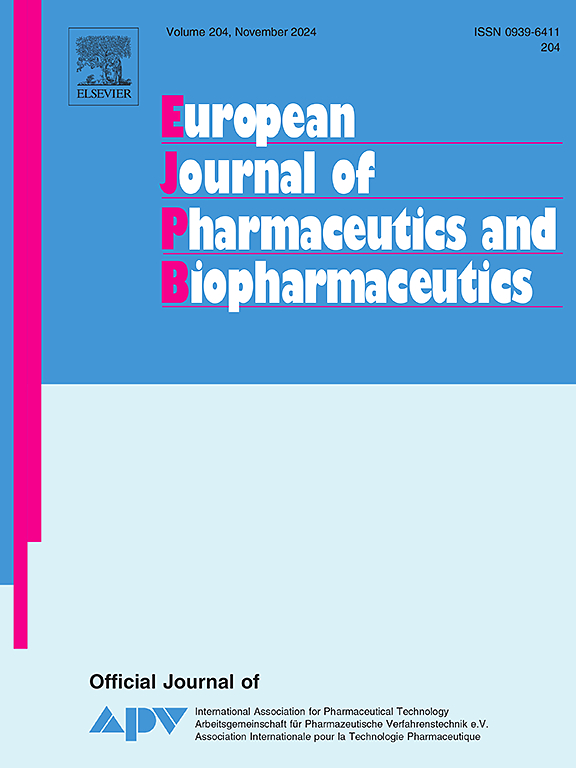Delivery of Magnolia bark extract in nanoemulsions formed by high and low energy methods improves the bioavailability of Honokiol and Magnolol
IF 4.4
2区 医学
Q1 PHARMACOLOGY & PHARMACY
European Journal of Pharmaceutics and Biopharmaceutics
Pub Date : 2025-01-04
DOI:10.1016/j.ejpb.2025.114627
引用次数: 0
Abstract
Honokiol (HK) and Magnolol (MG), isomers found in Magnolia officinalis bark extract (MBE), possess bioactive properties attributed to their biphenolic structure. However, their low polarity results in poor oral absorption, limiting their bioavailability. To enhance their systemic absorption after passing through the digestive tract, efficient carrier systems are essential. Nanoemulsions (NE) have been suggested to enhance their solubility in the oily core and enable passive diffusion through absorptive cells. Surfactants ensure stability by reducing surface tension between hydrophobic and hydrophilic compounds. In this study we report the preparation of NE containing HK and MG using high and low-energy methods (SNEDDS); we aimed to improve their absorption after oral administration. Results demonstrated that NE enhanced their bioavailability significantly. Compared to the free forms, HK bioavailability increased by 3.47 times, and MG by 3.03 times. SNEDDS further increased HK bioavailability by 3.98 times and MG by 7.97 times compared to their free forms.

求助全文
约1分钟内获得全文
求助全文
来源期刊
CiteScore
8.80
自引率
4.10%
发文量
211
审稿时长
36 days
期刊介绍:
The European Journal of Pharmaceutics and Biopharmaceutics provides a medium for the publication of novel, innovative and hypothesis-driven research from the areas of Pharmaceutics and Biopharmaceutics.
Topics covered include for example:
Design and development of drug delivery systems for pharmaceuticals and biopharmaceuticals (small molecules, proteins, nucleic acids)
Aspects of manufacturing process design
Biomedical aspects of drug product design
Strategies and formulations for controlled drug transport across biological barriers
Physicochemical aspects of drug product development
Novel excipients for drug product design
Drug delivery and controlled release systems for systemic and local applications
Nanomaterials for therapeutic and diagnostic purposes
Advanced therapy medicinal products
Medical devices supporting a distinct pharmacological effect.

 求助内容:
求助内容: 应助结果提醒方式:
应助结果提醒方式:


